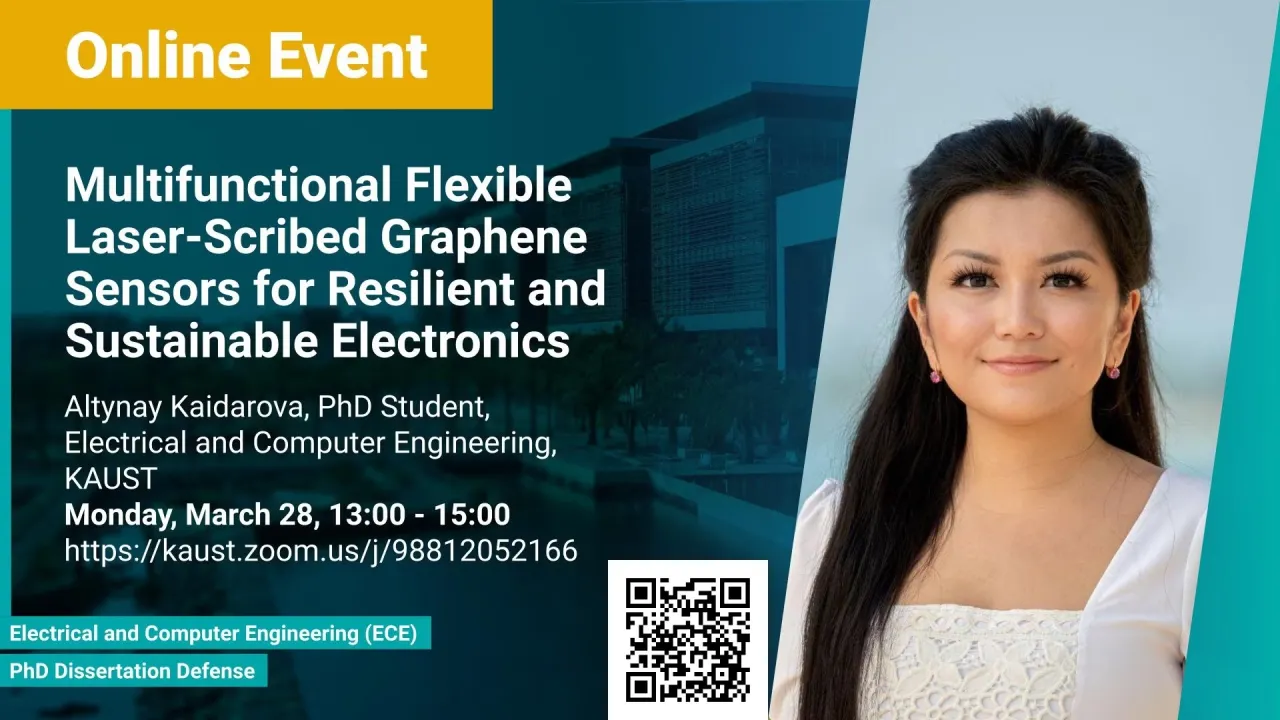
Multifunctional Flexible Laser-Scribed Graphene Sensors for Resilient and Sustainable Electronics
This dissertation introduces flexible, lightweight, and robust Laser-Scribed Graphene (LSG) sensor solutions for detecting various physical parameters, such as strain, flow, deflection, force, pressure, temperature, conductivity, and magnetic field. Multifunctionality was obtained by exploiting the direct laser scribing process combined with the flexible nature of polyimide and the piezoresistivity of porous graphene. The outstanding properties of LSG, such as low cytotoxicity, biocompatibility, corrosion resistance, and ability to function under extreme pressure and temperature conditions, allowed targeting diverse emerging applications.
Overview
Abstract
Sensing technologies form the fundamental building blocks of a multitude of advanced applications that detect and monitor the surroundings and communicate the acquired physical data. With the ever-increasing demand for more robust, high-performance, and compliant sensor solutions, considerable efforts have been made to further improve their features and limitations. Graphene has been identified as a potential candidate material for its excellent electrical and mechanical characteristics, however, its economic impact has been hindered by complex, energy-intensive, and unsustainable manufacturing processes. Recently, the one-step laser scribing process has enabled a simultaneous formation and patterning of porous graphene in a solid-state and opened new perspectives for versatile and widely tunable physical sensing platforms.
This dissertation introduces flexible, lightweight, and robust Laser-Scribed Graphene (LSG) sensor solutions for detecting various physical parameters, such as strain, flow, deflection, force, pressure, temperature, conductivity, and magnetic field. Multifunctionality was obtained by exploiting the direct laser scribing process combined with the flexible nature of polyimide and the piezoresistivity of porous graphene. The outstanding properties of LSG, such as low cytotoxicity, biocompatibility, corrosion resistance, and ability to function under extreme pressure and temperature conditions, allowed targeting diverse emerging applications.
As a wearable device in healthcare, the LSG sensor was utilized to monitor motions involving joint bendings, such as finger folding, knee-related movements, microsleep detection, heart rate monitoring, and plantar pressure measurements. Meanwhile, the marine ecosystem was used as an illustrative sensor application to cope with harsh environments. To this end, the sensor measured the velocity of underwater currents, pressure, salinity, and temperature while also monitoring the movement of marine animals. The sensitivity to the magnetic field remained stable up to 400 °C, making the LSG sensor a viable option for high-temperature applications. In robotics, the LSG sensor was developed for velocity profile monitoring of Unmanned Aerial Vehicles (UAV) in an outdoor environment and when integrated with flexible elastomer and magnetic skin as a soft tactile sensor. The study also provides insights into various methods of improving sensor performance while preserving its robust behaviors under various bending conditions, opportunities, and challenges facing a tangible realization of truly wearable graphene physical sensors.
Brief Biography
Altynay has pursued an academic career in Electrical Engineering in different countries, such as Kazakhstan, Singapore, the United Kingdom, and Saudi Arabia. She considers herself a citizen of the world upholding scientific achievements, passion, inspiration, diversity, integrity, and openness.
She has completed the foundation at Nanyang Technological University in Singapore and obtained a first honor degree in Electronics and Communication Engineering at the University of Liverpool in 2014. In 2016 she has become a Research and Teaching Assistant at Nazarbayev University, where she strived to cultivate students’ curiosity and interest in learning while gaining a high level of flexibility and responsibility. In 2017 Altynay obtained a Master's degree in King Abdullah University of Science and Technology, where she was identified as an excellent representative of the EE program. Her research interests include flexible, printed, sustainable electronics, wearable sensors, and electronic skin.
